We’ve analysed over 80 million keywords and billions of search results in order to better understand clickrates in Google Search. We were as surprised as you are going to be in a moment. Throw your outdated knowledge about CTRs away and let’s start from scratch.
- The most important results summarised
- Why we need to deal with Google CTR
- 28.5% of Google users click the first organic result
- Click rates are determined by the SERP layout
- Most Keywords show purely organic results
- SERPs with Sitelinks: 46.9% CTR on position #1
- Featured snippets cost 5.3 percentage points CTR
- Google Apps: the extreme version of the featured snippet
- Knowledge Panels: only 16% instead of 28% CTR
- Record for the lowest CTR - keywords with Google Shopping: 13% CTR
- Google Ads reduce the CTR by 10 percentage points
- CTR thieves: pictures, locations, news & recipes
- What (and how) we measured
- Conclusion
Discover how SISTRIX can be used to improve your search marketing. 14 day free, no-commitment trial with all data and tools: Test SISTRIX for free
The Google CTR (Click-through rate, or clickrate) shows you how many people click on each position, in terms of percentage of all clicks. If you don’t have time to read the full article, here’s a summary of the important results from our study.
The most important results summarised
- The average clickrate for the first position in Google is 28.5%
- Beyond position 1 the percentage falls quickly: In the second position, the average clickrate is 15.7% and the in the third position, 11%
- In the tenth position, only an average of 2.5% of people searching click on the result.
- Global CTRs across all types aren’t very useful because depending on the search intention, and therefore SERP layout, the CTR for position #1 will vary between 13.7% and 46.9%
- Searches for which Sitelinks are shown have a much better CTR than pure organic SERPs. (46.9% to 34.2%)
- The worst clickrate is found on commercial searches where a Google Shopping (13.7%) or Google Ads (18.8%) feature is shown.
- Featured Snippets (23.3%) and Knowledge Panel features (16.7%) also reduce the organic clicks.
- In general, where there are more different elements and integrations in the SERPs, you’ll find lower CTR figures.
- For SEOs it means: The search intention of a keyword defines the SERP layout, and therefore, how how many organic clicks you can target. Search volume alone isn’t the decisive figure.
If you’ve brought a little more time with you, let us now go into a deeper analysis and more, interesting results.
Why we need to deal with Google CTR
Search engine optimisation is the art of directing as many relevant visitors to your own website as possible. The click rate (CTR) has a massive impact on the result of your work. It is common knowledge that hardly any user clicks on the second results page. However, the massive differences between CTR within the first ten organic results are less known.
In addition, most studies and analyses on the Google CTR are based on the click behaviour of desktop users. In almost all countries, however, searches on mobile phones have now overtaken desktop searches. Mobile SERPs are much more concentrated and show the direction in which Google is already developing search.
The Google search landscape is currently changing rapidly. The number of mobile searches is increasing steadily, the variety in the search results is increasing due to new integrations and features from Google and the attention span and associated willingness to scroll is decreasing. These and other influencing factors ensure that previous knowledge about Google CTRs is outdated.
28.5% of Google users click the first organic result
In the first step, and forming the basis for further evaluations in this study, we determined the Google CTR over all analysed data. In contrast to previous studies of the CTR, we only measure mobile data, i.e. the behaviour of the user on the small screen of their mobile phone. The results for the first Google results page are:
It is clear to see how different the click behaviour of Google users is – by far the most clicks land on the first organic result (28.5%). In second place with 15.7% it is only around half the clicks for position 1 and the percentage decreases steadily thereafter.
A ranking at position #1 achieves a click rate that is more than ten times higher than a ranking at position #10. The biggest, absolute leap in CTR is made with a ranking improvement from # 2 to # 1: this improvement leads to a CTR that is 12.8 percentage points higher.
On the second page, we were able to measure significantly less than one percent CTR for each position. Because of that, we’ve concentrated only on the first page in this analysis. Conversely, this also means that if you don’t rank on the first page, users on Google won’t find you.
Click rates are determined by the SERP layout
Averages, as shown in the diagram above, distort the reality. They just show that, the average. The real click-through rates can look very different in your keyword environment and in your industry. Therefore, we took an additional big step in this analysis and evaluated the CTR for different SERP layouts.
By SERP layout we mean the specific composition of a Google results page (SERP). This consists largely of the classic, organic results, but is increasingly enriched with other boxes and features.
In this post, we focus on the most popular SERP layouts. For those, we take the first SERP result presented and remove keywords whose results pages consist of a combination of different feature boxes. This way we get comparable and clean data.
Most Keywords show purely organic results
Most of the keywords we measured consist of purely organic results: 10 blue links, as in the early days of Google, and no other distracting elements.
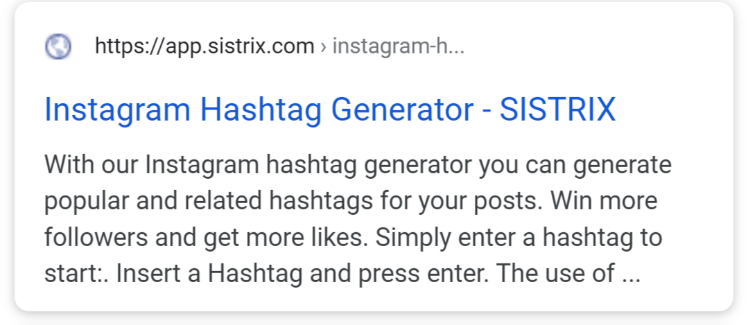
The more you work into the long-tail, the greater the proportion of purely organic SERPs. On the other hand, high-traffic keywords from the so-called short-head often consist of different features and boxes. The CTRs for purely organic SERPs look like this:
In the background (in grey) you can see the reference values from the graph above, i.e. the average values over all evaluated data. The blue line shows you the click rates for this specific SERP layout so you can easily see the differences and deviations. This also applies to other evaluations in this article.
In this case, it is clear to see that the click rate for all organic search results is above average for purely organic search results. In the first position there are even around 6 percentage points more clicks: 34.2% of the searchers click on the first results if the SERP layout consists exclusively of organic results.
SERPs with Sitelinks: 46.9% CTR on position #1
Next we have the evaluation of search results with Sitelinks. With the Sitelinks extension, Google offers further navigation links that lead to subpages. This integration takes up a lot of space and attention.
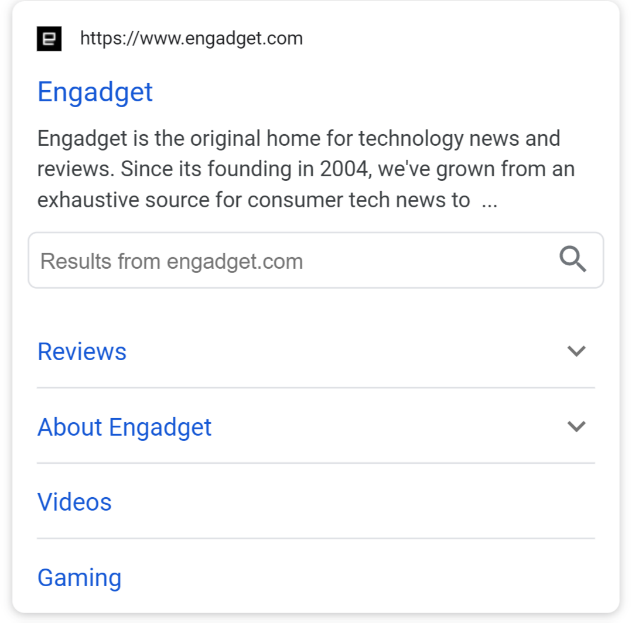
Sitelinks are shown by Google if there is a clear website intent, i.e. the user is looking for a specific website, but does not know the URL or does not know how to use a web browser. This can also be seen very clearly in the click rates:
In the first position (the one with the sitelinks) we see a clear above-average click rate of 46.9% – almost every second click on this SERP. In comparison, the CTRs in the other positions are significantly lower: in position three, for example, the click rate is less than half the average (5.6% to 11.0%).
Here the effects of the website intent become clear: the user is looking for a special website and is only ready to click on it as a result. In most cases, the searcher does not accept other results – a ranking for keywords with website intentions is only worthwhile if you are the website or brand you are looking for.
Featured snippets cost 5.3 percentage points CTR
Google refers to organic results which are highlighted in the SERPs as featured snippets. Both the text snippet is more extensive than with conventional organic positions, and additional elements such as images or tables are sometimes included:
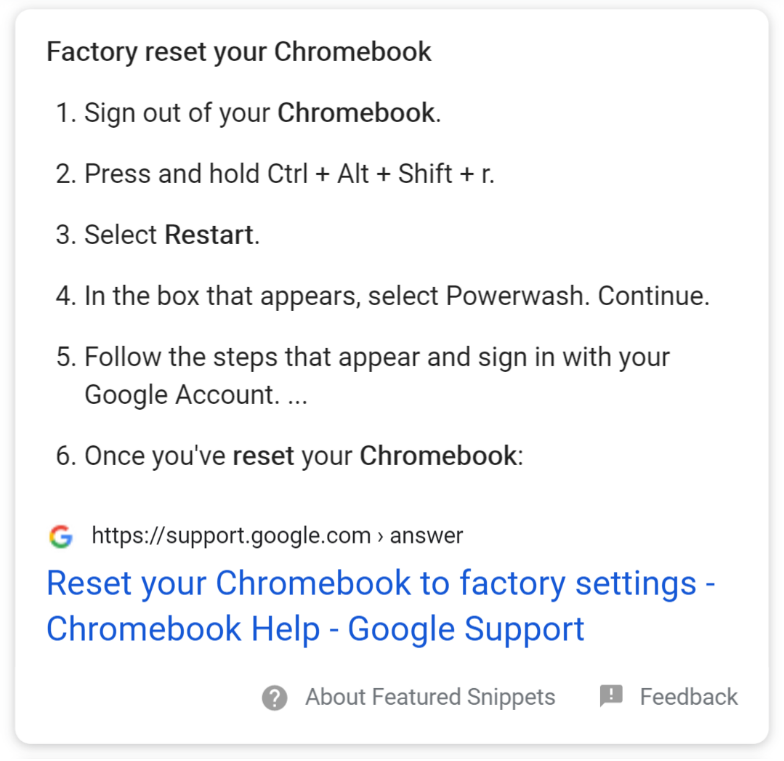
Featured snippets can be found in the search results if Google assumes a Know Simple search intent: the searcher wants to know something and Google believes that it can deliver the answer directly in the search results. This can also be seen in the CTRs:
The first ranking (with the featured snippet) has a click rate that is 5.3% percentage points below the average value for this position. The website from which the information in the featured snippet is created does not benefit from the featured snippet.
Interestingly, the websites at positions # 2 and # 3 benefit significantly: the second place winner gets almost five additional percentage points compared to the average (15.7% to 20.5%) and the third place site will also get an increase in CTR from 11% to 13.3%.
Google Apps: the extreme version of the featured snippet
When searching with the search intention “Know”, the user wants to expand his knowledge. “Know Simple” is a special case defined by Google – here Google believes it can answer the question directly in the search results and shows a featured snippet. According to a our data, a version of the know-simple search result not officially defined by Google, is even more extreme.
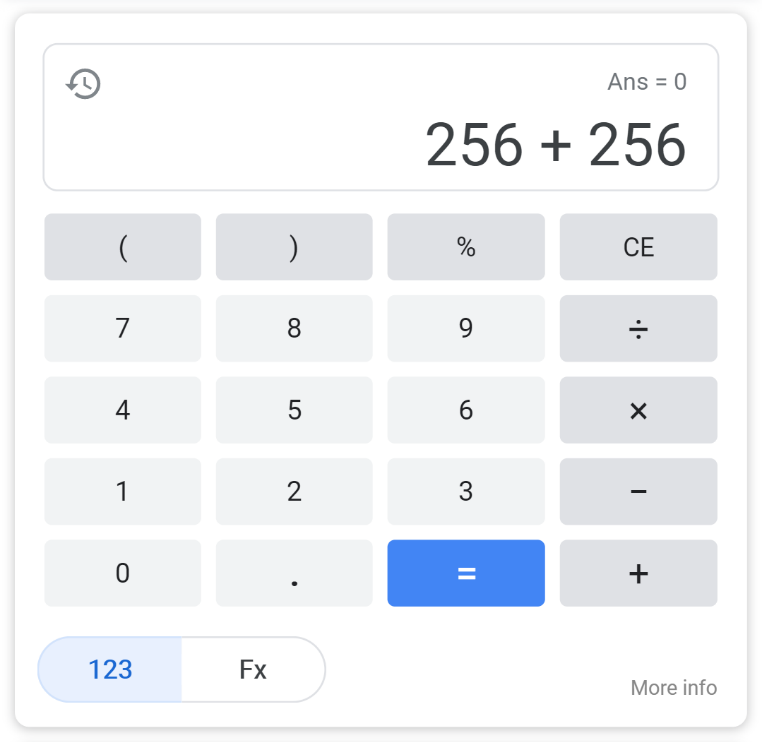
You can see this for translations, dictionaries, weather and many other keyword groups. The result is clearly shown in the distribution of the click rate:
The CTR in the first position almost halved and plummeted from 28.5% to only 16.3%. But there is also a first in the data: the second organic position receives more clicks than the first position with this SERP layout: 16.7% of Google users click on # 2 and not on # 1.
Knowledge Panels: only 16% instead of 28% CTR
Google gathers a variety of different content in Knowledge Panels, mostly from the Knowledge Graph (Google’s understanding of things, places, people and more).
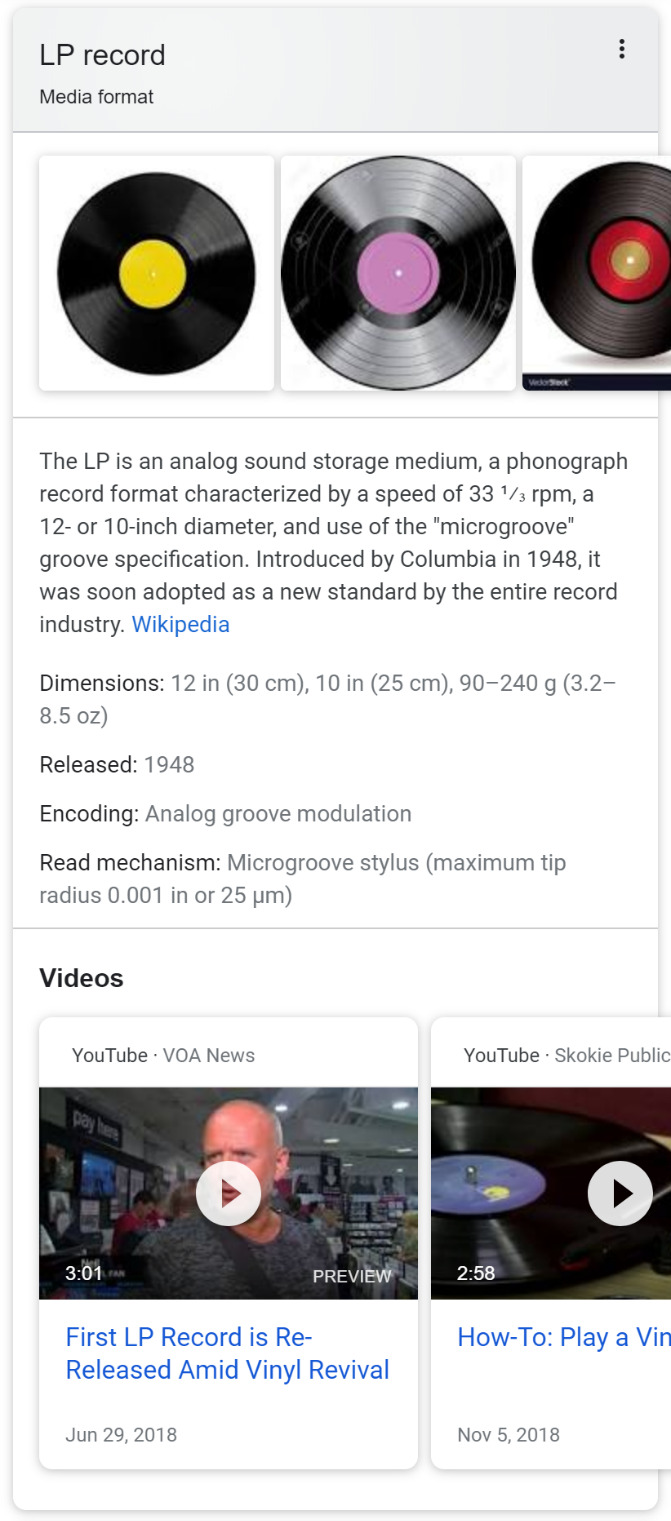
While the Knowledge Panel can be found on the desktop on the right of the actual SERPs and thus leads to the pinball pattern measured by Nielsen, it is in the mobile search directly below the search field in the first position. This is shown in the click rates:
The CTR in the first two organic positions drops significantly compared to the average. Many users appear to find the information they are looking for in the Knowledge Panel – especially on their smartphones, where each time a page is loaded it takes a lot of time.
In the remaining organic positions we see a similar click behaviour as with other SERPs layouts, which also have a strong element at the beginning where more searchers click on these results than on average.
Record for the lowest CTR – keywords with Google Shopping: 13% CTR
Google has to make money and the market demands more of that every quarter. The route to money: Move clicks from the organic area of the search for which Google does not generate any income, into the paid area – because there, payments are done on a per click basis.
The effects on keywords for which Google’s price comparison is shown are clearly visible. The feature on mobile phones in particular is much more present and space-consuming than normal ads.
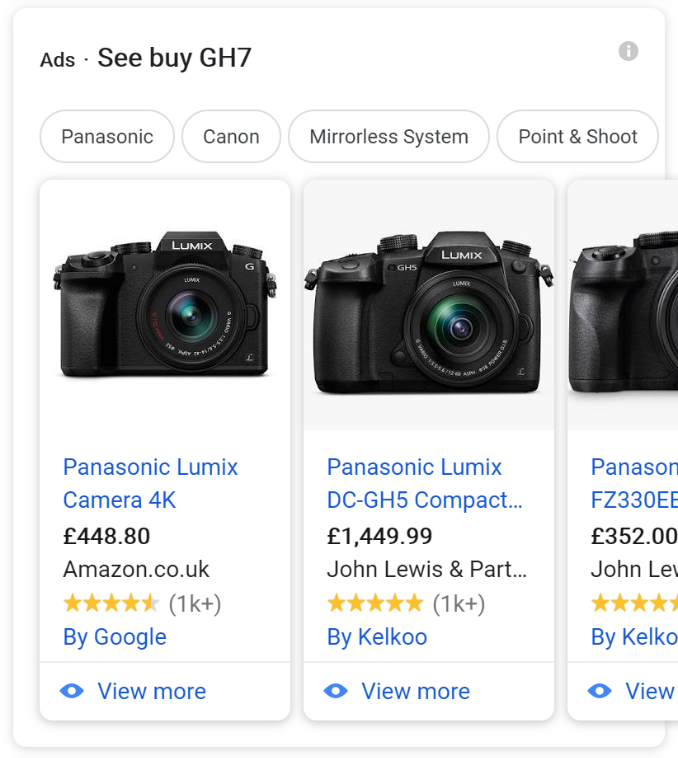
Not surprisingly, such a strong graphical integration has a very direct impact on the organic click rate for search queries when it’s shown.
SERP layouts in which the Google Shopping integration is integrated at the top set the record for lowest organic CTRs: only 13.7% of users click on the first result of the search. The click rates for the other results are also significantly below average.
Google Ads reduce the CTR by 10 percentage points
Google Ads (formerly Google Adwords) is the classic type of advert in the search results. Google uses a bidding process to optimise the order, and its own earnings.
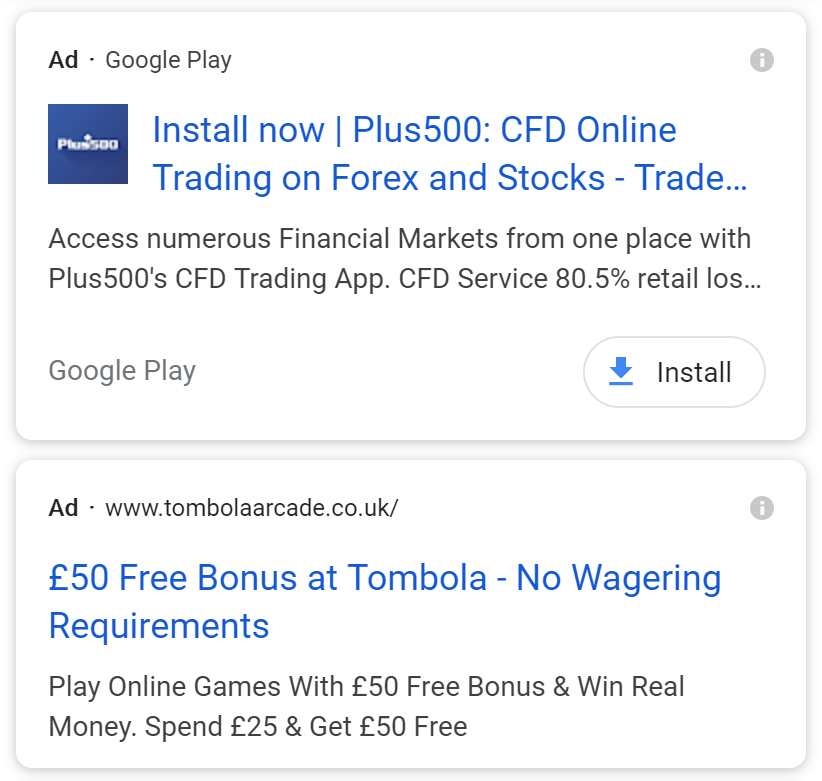
In the past, three ads with different colours have now become four ads that only experts can distinguish from organic results. This can also be seen in the CTRs of organic results:
The click rate for the first organic position is around 10 percentage points less than the average values. The remaining click rates on the first results page are also significantly below average.
CTR thieves: pictures, locations, news & recipes
The boxes for images and news are among the cornerstones of universal search features. Along with added features for places / companies as well as the new recipe integration, all have one thing in common: the visitors click less on the remaining organic results if these integrations are found in the SERPs. Since the CTR curves for these integrations all look similar, we have summarised them here:
But there is also one exception: the video boxes. If these video integrations are included in the search results, more users click on the first organic result than average, while the click rates on the remaining rankings remain roughly the same:
What (and how) we measured
Our goal was to determine current and applicable CTR data for the current search landscape on Google. We look at data for mobile phone usage, since more than half of all searches take place on the smartphone. This proportion continues to increase.
It was also important that we didn’t only determine the general average values. As can be seen in the analyses, these distort the reality: whether almost 50% of users click on the first result as with Sitelinks or only 13% as with the integration of Google Shopping, it makes a massive difference for potential SEO success.
In theory the process is very simple: we take data provided by partners for impressions and clicks from the Google Search Console, combine them with our information on SERP layouts and evaluate the combined results.
Anyone who has worked more deeply with data from the Search Console knows that, in practice, the real data can be different. The mixture of inconsistent data collection, data protection concerns, fear of the anti-competition authorities and other factors means that only a part of the data from Google Search Console, after an intensive cleanup, is really usable. That alone is enough content for your a separate blog post…
We have combined the cleansed data from the Search Console with our information on SERP layouts. We focused on the most common layouts. In SISTRIX we evaluate over 50 different boxes and integrations, but here we have focused on the most important types. We have also restricted ourselves to “single-variety” results, so we only took values where the feature appears with the organic results. We have values for combinations and mixtures, but that would go beyond the scope of this article.
Conclusion
Search volume, as the sole metric for evaluating potential clicks, has had its day. As can be clearly seen in the analyses, the SERP layout of the keyword must also be included in the evaluation – only the combination of search volume and SERP layout results in a realistic number of potential visitors.
Google knows how to direct the flow of visitors. The unmistakable direction: either to a paid click out of the platform (Ads & Shopping) or by keeping the user on the platform and meeting the need for information directly through Google (Featured Snippets, Knowledge Panels, Google Apps).
The relevance of the search intention continues to increase: The users search intention determines the SERP layout, and the SERP layout determines how many potential clicks an organic result can get for that keyword.
In the future, we will also see increasing relevance for “On-SERP-SEO“, i.e. an optimisation of content in the boxes and integrations such as the Knowledge Panel, the Local-Box and numerous other SERP features.
Test SISTRIX for Free
- Free 14-day test account
- Non-binding. No termination necessary
- Personalised on-boarding with experts

